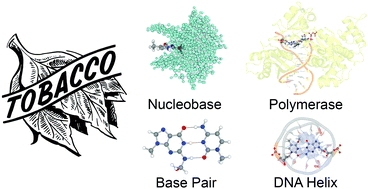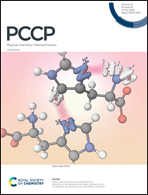Multiscale computational investigations of the translesion synthesis bypass of tobacco-derived DNA adducts: critical insights that complement experimental biochemical studies
Abstract
Among the numerous agents that damage DNA, tobacco products remain one of the most lethal and result in the most diverse set of DNA lesions. This perspective aims to provide an overview of computational work conducted to complement experimental biochemical studies on the mutagenicity of adducts derived from the most potent tobacco carcinogen, namely 4-(methylnitrosamino)-1-(3-pyridyl)-1-butanone (nicotine-derived nitrosaminoketone or NNK). Lesions ranging from the smallest methylated thymine derivatives to the larger, flexible pyridyloxobutyl (POB) guanine adducts are considered. Insights are obtained from density functional theory (DFT) calculations and molecular dynamics (MD) simulations into the damaged nucleobase and nucleoside structures, the accommodation of the lesions in the active site of key human polymerases, the intrinsic base pairing potentials of the adducts, and dNTP incorporation opposite the lesions. Overall, the computational data provide atomic level information that can rationalize the differential mutagenic properties of tobacco-derived lesions and uncover important insights into the impact of adduct size, nucleobase, position, and chemical composition of the bulky moiety.

- This article is part of the themed collections: 2022 PCCP HOT Articles and PCCP Reviews


 Please wait while we load your content...
Please wait while we load your content...